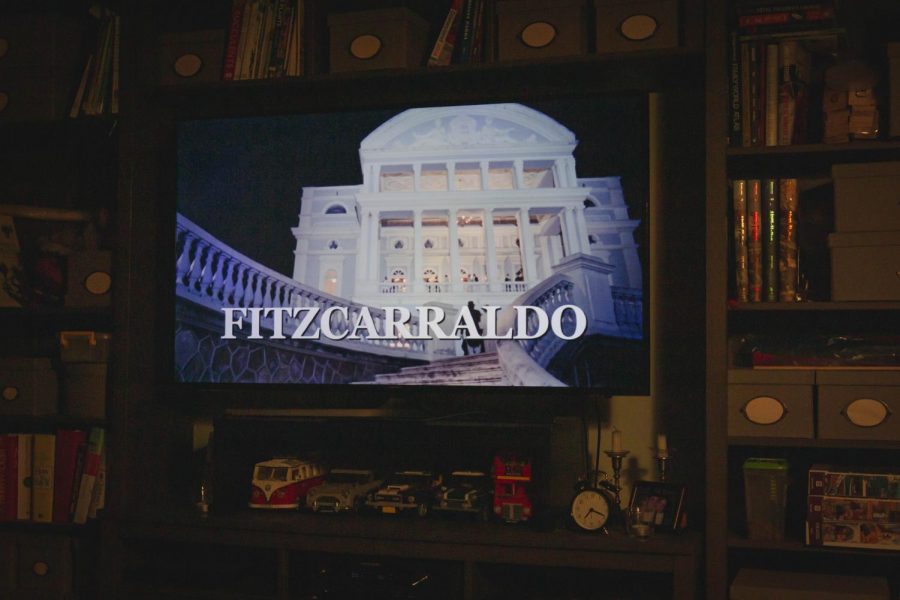Five Classic Foreign Films Worth Checking Out
Watching foreign films is a great way to expand perspectives and immerse yourself in another culture.
March 17, 2021
Beyond the obvious language barrier you may encounter when endeavoring into foreign films, it is a great way to immerse yourself in a different culture, see films from outside of Hollywood, and gives a different perspective into the values of other cultures. Subtitles may seem daunting and perhaps tedious, but this should not stop you from exploring great films that just happen to be in a different language.
I think it important that we break away from the subservient monotony of domestic film and instead sample the same salient themes present in film through different lenses of other cultures.
Broaden your film experience with this list of five foreign films. This list contains a varying assortment of films, ranging from dark humor, to war and drama.
“The Bicycle Thief” (1948)
Directed by Vittorio De Sica, “The Bicycle Thief” is a pioneering work in Italian neorealism — a genre set apart by its use of non-professional actors and stories, usually set among the working class following plight, poverty, and struggle, which is not uncommon in the aftermath of war.
Originally titled “Ladri di biciclette,” the film follows Antonio Ricci, played by Lamberto Maggiorani. Antonio is desperate for work, but when he is finally presented with an opportunity to paste advertisements, he tells his wife, Maria, played by Lianella Carell, that he cannot take the job without a bicycle.
Maria strips the sheets from their bed as their prized possession to be pawned. As the title indicates, the bicycle is stolen and Antonio and his son, Bruno, played by Enzo Staiola, search post-war Rome for their bike. The father and son become more despondent as they venture through the city, stopping at a brothel and a black market.
Maggiorani was a steel factory worker at the time he was cast. Like Maggiorani, Staiola was cast with no prior experience after De Sica saw the boy on the street watching the film’s production.
As a neorealist film, “The Bicycle Thief” was filmed on real locations on the streets of Rome and used mainly actors who had no previous experience and actually somewhat mirrored the lives of its characters. The film had a new approach to storytelling in contrast to the decadence of other films at the time.
The film is beautifully crafted as it is relatively simple in plot and production, unorthodox to the time of its release. The absence of the decadence or grandeur of Hollywood within the film allows the viewer to focus on the people who are faced with real problems that were rife in the aftermath of war.
“The Bicycle Thief” is an important film in cinema history because while it is certainly a tragedy, there are glimpses of satire and is a beautifully crafted film.
There are scenes in which the social standing of Ricci and his son is in contrast to others. The film juggles moral themes, which the characters are faced with due to socioeconomics.
There is no definitive antagonist and therefore no one to blame. Even when the bicycle thief is confronted, he is just shown to be a victim of the times as Ricci is.
“The Bicycle Thief” is an important film in cinema history because it tackled difficult social themes. There isn’t a satisfying ending nor is there a resolution, instead “The Bicycle Thief” presents reality and it is up to the viewer to speculate what happens after the credits roll.
It is currently available to stream on HBO Max.
“Fitzcarraldo” (1982)
An epic set in the Peruvian Amazon, “Fitzcarraldo” is a West German film directed by Werner Herzog, who is commonly known for his outlandish film style that depicts the extremes of human nature.
Played by Klaus Kinski, Brian Sweeny Fitzgerald is an eccentric, aspiring rubber baron, who is made known of an available but inaccessible plot of land where he hopes of building an opera house in Iquito, inspired by his great passion for the opera.
The film had an ambitious production, being physically filmed in the Amazon, and is best known for a scene where a 320-ton steamship is moved over a hill so it could reach another river towards the plot of land. It is important to note that Herzog refused to use special effects, which led to an actual ship being hauled with the use of labor from the indigenous Agurana People.
The film was originally going to feature Rolling Stones’ Mick Jagger in the role of Fitzgerald’s assistant, but was cut after Kinski was recast as Fitzgerald.
In its description, “Fitzcarraldo” seems impossible due to its madness, but this is what makes it great. The production followed the same journey the film makes through the Amazon and actually pulling a steamship over a hill.
It is currently available on Amazon Prime.
“Fires on the Plain” (1959)
Tamura, a private in the Japanese army, is ordered to commit suicide if he is not able to reach a field hospital, but he cannot and wanders aimlessly as the American army begins its liberation of the Philippines.
Based on a novel of the same name, “Fires on the Plain” is a bleak and grim film set in the Philippines during the closing days of World War II, which contrasts to other war films.
It could be said that all war films should in reality be anti-war, as they show the futility and horrors of conflict. “Fires on the Plain” does a great job of displaying the dehumanizing effect of war.
Rather than focusing on the frills or glories of conflict, “Fires on the Plain” is unlike any other film on the horrors of war as its director, Kon Ichikawa, goes further by presenting a harrowing tale which is seemingly gratuitous as he encounters cannibalism.
When watching the film, it is almost completely desolate and barren of hope as scenes of demoralized men tredge the scorched landscape. There is hardly a sense of optimism as Tamura wanders the island, hoping to return home.
I first watched this movie by renting out the DVD from my local library.
“Seven Samurai” (1954)
Probably one of the most influential foreign films and routinely featured in lists about foreign films, “Seven Samurai” was the direct inspiration for “The Magnificent Seven.” The film’s director, Akira Kurosawa, directed other influential films such as “The Hidden Fortress,” which influenced George Lucas’ “Star Wars.”
“Seven Samurai” is set during the era of feudal Japan. When a village is under threat of attack from bandits, they seek the help of a samurai named Kanbê who enlists the help of six others. Throughout, the story is well paced and is entertaining if you are willing to watch through more than three hours of quality cinema.
Kurosawa explores themes of love and loyalty in this template for other films. “Seven Samurai” has been somewhat reincarnated in a variety of films including “A Bug’s Life,” “Three Amigos,” and as previously mentioned, “The Magnificent Seven.” The characters and settings have changed, but the format is still evident.
The film gained its success abroad as it was one of the first films from Japan that was released internationally and introduced an intriguing, foreign culture to a western audience.
It is currently available on HBO Max.
“Dersu Uzala” (1975)
The second film on this list directed by Akira Kurosawa, “Dersu Uzala,” is a Soviet-Japanese film and while it is easy to bash the repressive Soviet regime, “Dersu Uzala” is a truly great film that should not be judged simply by its origin.
“Dersu Uzala” is based off of a 1923 memoir with the same name and opens on Arsenyev, a Russian captain, who is looking for the grave of the eponymous character three years after his death. Set in far eastern Tsarist Russia, Arsenyev is sent on a topographic expedition. He befriends Dersu Uzala, a stoic, nomadic hunter, who saves Arsenyev’s life in a blizzard.
A lot of these films, or at least their descriptions, seem to be convoluted, but “Dersu Uzala” is a beautiful film that shows an enduring friendship as Dersu Uzala begins to lose his sight, which is necessary for him as a hunter, and he is made to live with Arsenyev and his family.
Kurosawa had attempted to commit suicide in 1971 after a series of failures. While he is today considered one of the most important filmmakers in cinema history, Mosfilm, a soviet studio, reached out to Kurosawa to make the 1923 memoir into a film which went on to win an Academy Award for Best International Feature Film in 1976 during the Cold War.





